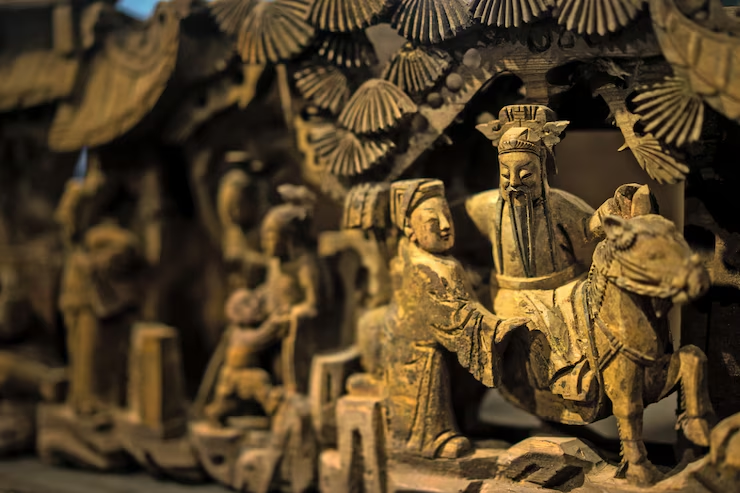Nestled in the heart of tradition, Žižole is more than just a festival; it’s a vibrant tapestry woven with history and culture. This unique event captivates both locals and visitors alike, drawing them into its spirited celebrations. With roots that stretch back generations, Žižole represents a blend of joy, community bonding, and rich folklore. As we delve deeper into this captivating tradition, you’ll discover stories that echo through time—stories filled with laughter, rituals, and even controversies. Join us on this journey to understand why Žižole continues to be a cherished experience for many.
The Origins of Žižole
Žižole traces its roots back to ancient times, deeply embedded in the cultural fabric of Eastern Europe. This tradition emerged as a way for communities to celebrate the arrival of spring and honor fertility.
Historically, Žižole was linked to agricultural practices. Farmers believed that participating in this ritual would ensure bountiful harvests. The vibrant festivities marked an essential transition from winter’s harshness to nature’s renewal.
Ritualistic elements were intertwined with folklore. Legends passed down through generations highlighted deities associated with growth and abundance. These tales enriched the meaning behind each celebration.
As time went on, local customs evolved while retaining core aspects of their origins. Today, remnants of these early traditions can still be felt during modern-day observances, showcasing how history continues shaping contemporary celebrations across various communities.
How Žižole is Celebrated Today
Today, Žižole is celebrated with vibrant enthusiasm across various communities. The festival typically unfolds during the spring, symbolizing renewal and growth. Families gather to partake in lively street fairs adorned with colorful decorations.
Traditional music fills the air. Local bands perform folk songs that have been passed down through generations. It’s a joyous occasion where people dance together, creating an atmosphere of unity and festivity.
Culinary delights play a significant role as well. Stalls are lined with vendors offering traditional foods unique to Žižole. From sweet pastries to savory dishes, every bite tells a story of cultural heritage.
Children engage in playful activities like crafting small decorative items associated with Žižole traditions. This hands-on experience keeps the customs alive for future generations.
As night falls, community members light lanterns symbolizing hope and new beginnings, illuminating not just their surroundings but also their spirits.
The Symbolism and Meaning Behind Žižole
Žižole is steeped in rich symbolism that captures the essence of cultural identity. At its core, it represents resilience and continuity within communities.
The colorful ornaments often seen during celebrations signify fertility and prosperity. Each hue carries distinct meanings, reflecting hopes for abundance in both harvests and relationships.
Additionally, Žižole serves as a reminder of shared history among generations. It connects individuals through storytelling and collective experiences passed down over time.
Participants engage deeply with this tradition, embodying values such as unity and respect for nature. This connection fosters a sense of belonging and pride within families.
Moreover, Žižole’s rhythmic chants resonate with spiritual significance. They invoke blessings from ancestors while celebrating life’s cycles—births, deaths, and everything in between.
In every aspect of Žižole lies an intricate web of meaning that enriches the lives it touches. Its enduring legacy continues to inspire future generations to honor their roots.
Unique Traditions and Customs Associated with Žižole
One of the most captivating aspects of Žižole is its colorful customs. Each year, communities come together to create intricate decorations using natural materials like twigs and flowers. These handmade ornaments are symbolic and often tell stories passed down through generations.
During the festivities, traditional dances fill the air with energy. Participants wear vibrant costumes that reflect regional heritage, transforming streets into a living gallery of culture.
Food also plays a central role in Žižole celebrations. Families prepare special dishes, often featuring seasonal ingredients unique to their area. Sharing meals fosters connections among neighbors and strengthens community bonds.
Another interesting custom involves storytelling sessions around bonfires. Elders pass on legends associated with Žižole, keeping history alive for younger generations while adding an enchanting layer to the event’s atmosphere.
These traditions intertwine seamlessly, creating a rich tapestry that captures the essence of this extraordinary celebration.
Controversies Surrounding the Tradition
Žižole has not escaped controversy. Critics argue that the tradition has strayed far from its original cultural significance. Some believe commercialization threatens its authenticity, transforming a once-humble celebration into a marketing spectacle.
Environmental concerns also arise during Žižole festivities. The use of single-use materials in decorations and offerings raises questions about sustainability. Many advocate for cleaner practices to preserve both the tradition and the environment.
Moreover, generational divides complicate matters further. Younger participants often embrace modern interpretations, while elders cling to traditional methods. This clash creates tension within communities, as differing views on how to honor Žižole come to light.
Social media plays a dual role in this debate. While it helps spread awareness and participation, it can also amplify criticisms of perceived missteps or cultural appropriation associated with the celebration.
The Future of Žižole: Will it Continue to Thrive or Fade Away?
The future of Žižole hangs in a delicate balance. Modern influences are reshaping traditions everywhere, and Žižole is no exception. Younger generations may not feel the same connection to the customs that their ancestors cherished.
Yet, there’s a glimmer of hope. Many communities recognize the importance of preserving these rituals. Local organizations are working hard to keep interest alive through educational programs and events.
Social media also plays a role in revitalizing traditions like Žižole. People share their experiences online, attracting attention and curiosity from those who might never have heard about it otherwise.
However, challenges remain. Urbanization and changing lifestyles can dilute cultural practices over time. The commitment of community leaders will be crucial in ensuring that this unique tradition does not fade into obscurity but instead adapts while maintaining its essence.
Conclusion
Žižole is more than just a tradition; it embodies the cultural richness and historical depth of its community. As we explore its origins, current celebrations, and the symbolism intertwined with this unique practice, it becomes clear that Žižole holds significant meaning for many.
The customs associated with Žižole showcase creativity and unity among participants. From vibrant decorations to lively gatherings, each element contributes to an atmosphere of joy and connection.
While some controversies may arise regarding modern interpretations or changes in customs, these discussions often serve to strengthen bonds within the community rather than weaken them. The love for Žižole remains strong among those who cherish their heritage.
Looking toward the future, it’s essential to nurture these traditions while also allowing them space to evolve. As long as there are passionate individuals committed to preserving this unique aspect of culture, Žižole will likely continue thriving amid changing times. The spirit of celebration ensures that its rich history will not be forgotten but instead embraced by new generations eager to partake in this captivating tradition.






